Yifeng Gao
Polynomial Closed Form Model for Ultra-Wideband Transmission Systems
Aug 29, 2025Abstract:Ultrafast and accurate physical layer models are essential for designing, optimizing and managing ultra-wideband optical transmission systems. We present a closed-form GN/EGN model, named Polynomial Closed-Form Model (PCFM), improving reliability, accuracy, and generality. The key to deriving PCFM is expressing the spatial power profile of each channel along a span as a polynomial. Then, under reasonable approximations, the integral calculation can be carried out analytically, for any chosen degree of the polynomial. We present a full detailed derivation of the model. We then validate it vs. the numerically integrated GN-model in a challenging multiband (C+L+S) scenario, including Raman amplification and inter-channel Raman scattering. We then show that the approach works well also in the special case of the presence of multiple lumped loss along the fiber. Overall, the approach shows very good accuracy and broad applicability. A software implementing the model, fully reconfigurable to any type of system layout, is available for download under the Creative Commons 4.0 License.
TRACE: Grounding Time Series in Context for Multimodal Embedding and Retrieval
Jun 10, 2025Abstract:The ubiquity of dynamic data in domains such as weather, healthcare, and energy underscores a growing need for effective interpretation and retrieval of time-series data. These data are inherently tied to domain-specific contexts, such as clinical notes or weather narratives, making cross-modal retrieval essential not only for downstream tasks but also for developing robust time-series foundation models by retrieval-augmented generation (RAG). Despite the increasing demand, time-series retrieval remains largely underexplored. Existing methods often lack semantic grounding, struggle to align heterogeneous modalities, and have limited capacity for handling multi-channel signals. To address this gap, we propose TRACE, a generic multimodal retriever that grounds time-series embeddings in aligned textual context. TRACE enables fine-grained channel-level alignment and employs hard negative mining to facilitate semantically meaningful retrieval. It supports flexible cross-modal retrieval modes, including Text-to-Timeseries and Timeseries-to-Text, effectively linking linguistic descriptions with complex temporal patterns. By retrieving semantically relevant pairs, TRACE enriches downstream models with informative context, leading to improved predictive accuracy and interpretability. Beyond a static retrieval engine, TRACE also serves as a powerful standalone encoder, with lightweight task-specific tuning that refines context-aware representations while maintaining strong cross-modal alignment. These representations achieve state-of-the-art performance on downstream forecasting and classification tasks. Extensive experiments across multiple domains highlight its dual utility, as both an effective encoder for downstream applications and a general-purpose retriever to enhance time-series models.
ThinkLess: A Training-Free Inference-Efficient Method for Reducing Reasoning Redundancy
May 21, 2025Abstract:While Chain-of-Thought (CoT) prompting improves reasoning in large language models (LLMs), the excessive length of reasoning tokens increases latency and KV cache memory usage, and may even truncate final answers under context limits. We propose ThinkLess, an inference-efficient framework that terminates reasoning generation early and maintains output quality without modifying the model. Atttention analysis reveals that answer tokens focus minimally on earlier reasoning steps and primarily attend to the reasoning terminator token, due to information migration under causal masking. Building on this insight, ThinkLess inserts the terminator token at earlier positions to skip redundant reasoning while preserving the underlying knowledge transfer. To prevent format discruption casued by early termination, ThinkLess employs a lightweight post-regulation mechanism, relying on the model's natural instruction-following ability to produce well-structured answers. Without fine-tuning or auxiliary data, ThinkLess achieves comparable accuracy to full-length CoT decoding while greatly reducing decoding time and memory consumption.
SafeVid: Toward Safety Aligned Video Large Multimodal Models
May 17, 2025Abstract:As Video Large Multimodal Models (VLMMs) rapidly advance, their inherent complexity introduces significant safety challenges, particularly the issue of mismatched generalization where static safety alignments fail to transfer to dynamic video contexts. We introduce SafeVid, a framework designed to instill video-specific safety principles in VLMMs. SafeVid uniquely transfers robust textual safety alignment capabilities to the video domain by employing detailed textual video descriptions as an interpretive bridge, facilitating LLM-based rule-driven safety reasoning. This is achieved through a closed-loop system comprising: 1) generation of SafeVid-350K, a novel 350,000-pair video-specific safety preference dataset; 2) targeted alignment of VLMMs using Direct Preference Optimization (DPO); and 3) comprehensive evaluation via our new SafeVidBench benchmark. Alignment with SafeVid-350K significantly enhances VLMM safety, with models like LLaVA-NeXT-Video demonstrating substantial improvements (e.g., up to 42.39%) on SafeVidBench. SafeVid provides critical resources and a structured approach, demonstrating that leveraging textual descriptions as a conduit for safety reasoning markedly improves the safety alignment of VLMMs. We have made SafeVid-350K dataset (https://huggingface.co/datasets/yxwang/SafeVid-350K) publicly available.
MTBench: A Multimodal Time Series Benchmark for Temporal Reasoning and Question Answering
Mar 21, 2025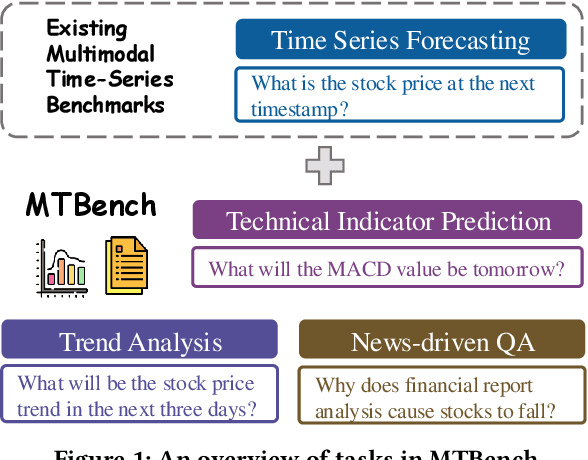

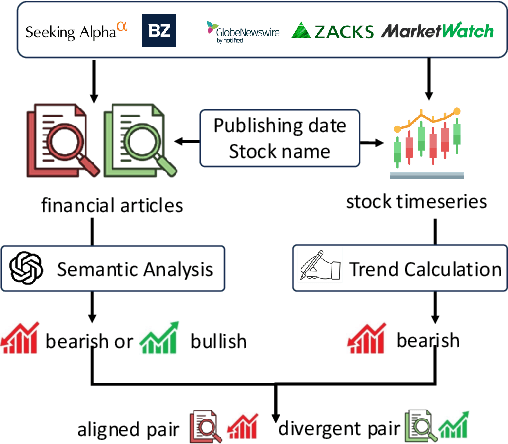

Abstract:Understanding the relationship between textual news and time-series evolution is a critical yet under-explored challenge in applied data science. While multimodal learning has gained traction, existing multimodal time-series datasets fall short in evaluating cross-modal reasoning and complex question answering, which are essential for capturing complex interactions between narrative information and temporal patterns. To bridge this gap, we introduce Multimodal Time Series Benchmark (MTBench), a large-scale benchmark designed to evaluate large language models (LLMs) on time series and text understanding across financial and weather domains. MTbench comprises paired time series and textual data, including financial news with corresponding stock price movements and weather reports aligned with historical temperature records. Unlike existing benchmarks that focus on isolated modalities, MTbench provides a comprehensive testbed for models to jointly reason over structured numerical trends and unstructured textual narratives. The richness of MTbench enables formulation of diverse tasks that require a deep understanding of both text and time-series data, including time-series forecasting, semantic and technical trend analysis, and news-driven question answering (QA). These tasks target the model's ability to capture temporal dependencies, extract key insights from textual context, and integrate cross-modal information. We evaluate state-of-the-art LLMs on MTbench, analyzing their effectiveness in modeling the complex relationships between news narratives and temporal patterns. Our findings reveal significant challenges in current models, including difficulties in capturing long-term dependencies, interpreting causality in financial and weather trends, and effectively fusing multimodal information.
Stop Looking for Important Tokens in Multimodal Language Models: Duplication Matters More
Feb 17, 2025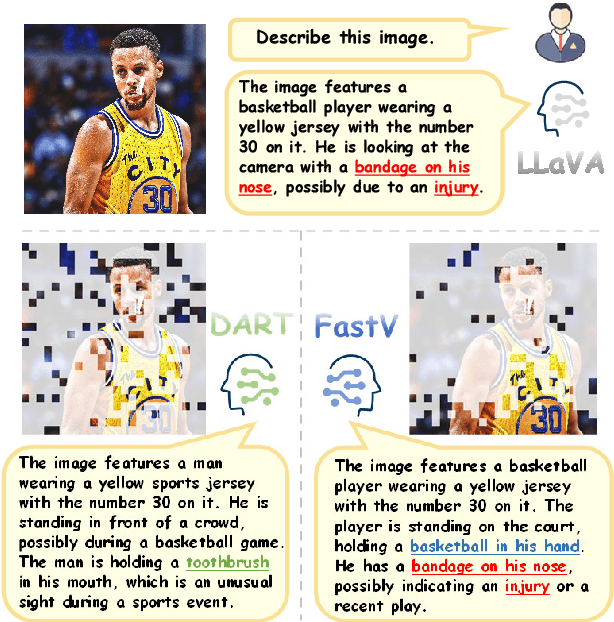
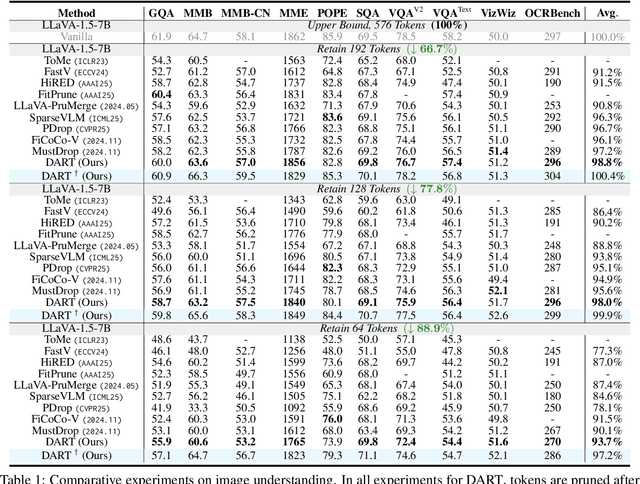
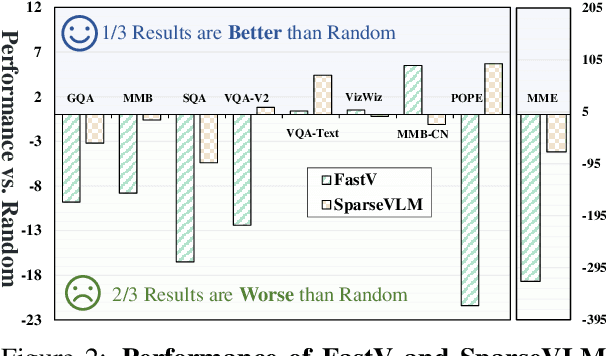

Abstract:Vision tokens in multimodal large language models often dominate huge computational overhead due to their excessive length compared to linguistic modality. Abundant recent methods aim to solve this problem with token pruning, which first defines an importance criterion for tokens and then prunes the unimportant vision tokens during inference. However, in this paper, we show that the importance is not an ideal indicator to decide whether a token should be pruned. Surprisingly, it usually results in inferior performance than random token pruning and leading to incompatibility to efficient attention computation operators.Instead, we propose DART (Duplication-Aware Reduction of Tokens), which prunes tokens based on its duplication with other tokens, leading to significant and training-free acceleration. Concretely, DART selects a small subset of pivot tokens and then retains the tokens with low duplication to the pivots, ensuring minimal information loss during token pruning. Experiments demonstrate that DART can prune 88.9% vision tokens while maintaining comparable performance, leading to a 1.99$\times$ and 2.99$\times$ speed-up in total time and prefilling stage, respectively, with good compatibility to efficient attention operators. Our codes are available at https://github.com/ZichenWen1/DART.
Token Pruning in Multimodal Large Language Models: Are We Solving the Right Problem?
Feb 17, 2025Abstract:Multimodal large language models (MLLMs) have shown remarkable performance for cross-modal understanding and generation, yet still suffer from severe inference costs. Recently, abundant works have been proposed to solve this problem with token pruning, which identifies the redundant tokens in MLLMs and then prunes them to reduce the computation and KV storage costs, leading to significant acceleration without training. While these methods claim efficiency gains, critical questions about their fundamental design and evaluation remain unanswered: Why do many existing approaches underperform even compared to naive random token selection? Are attention-based scoring sufficient for reliably identifying redundant tokens? Is language information really helpful during token pruning? What makes a good trade-off between token importance and duplication? Are current evaluation protocols comprehensive and unbiased? The ignorance of previous research on these problems hinders the long-term development of token pruning. In this paper, we answer these questions one by one, providing insights into the design of future token pruning methods.
SPA-VL: A Comprehensive Safety Preference Alignment Dataset for Vision Language Model
Jun 17, 2024



Abstract:The emergence of Vision Language Models (VLMs) has brought unprecedented advances in understanding multimodal information. The combination of textual and visual semantics in VLMs is highly complex and diverse, making the safety alignment of these models challenging. Furthermore, due to the limited study on the safety alignment of VLMs, there is a lack of large-scale, high-quality datasets. To address these limitations, we propose a Safety Preference Alignment dataset for Vision Language Models named SPA-VL. In terms of breadth, SPA-VL covers 6 harmfulness domains, 13 categories, and 53 subcategories, and contains 100,788 samples of the quadruple (question, image, chosen response, rejected response). In terms of depth, the responses are collected from 12 open- (e.g., QwenVL) and closed-source (e.g., Gemini) VLMs to ensure diversity. The experimental results indicate that models trained with alignment techniques on the SPA-VL dataset exhibit substantial improvements in harmlessness and helpfulness while maintaining core capabilities. SPA-VL, as a large-scale, high-quality, and diverse dataset, represents a significant milestone in ensuring that VLMs achieve both harmlessness and helpfulness. We have made our code https://github.com/EchoseChen/SPA-VL-RLHF and SPA-VL dataset url https://huggingface.co/datasets/sqrti/SPA-VL publicly available.
ModelLock: Locking Your Model With a Spell
May 25, 2024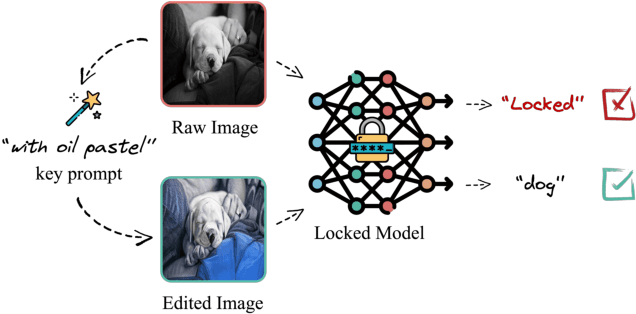
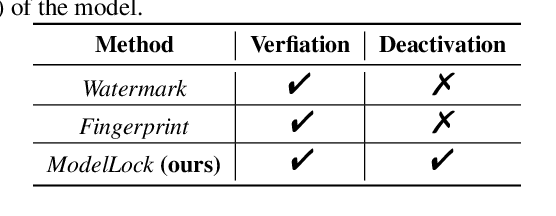
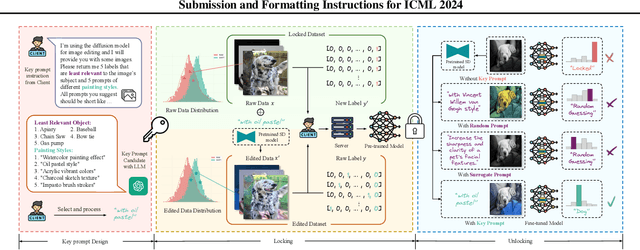
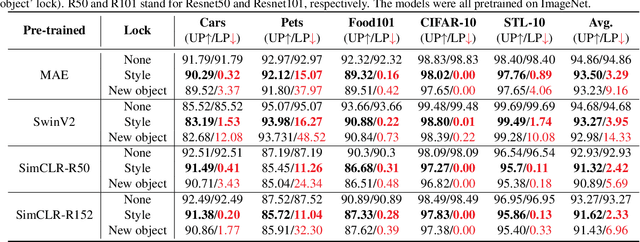
Abstract:This paper presents a novel model protection paradigm ModelLock that locks (destroys) the performance of a model on normal clean data so as to make it unusable or unextractable without the right key. Specifically, we proposed a diffusion-based framework dubbed ModelLock that explores text-guided image editing to transform the training data into unique styles or add new objects in the background. A model finetuned on this edited dataset will be locked and can only be unlocked by the key prompt, i.e., the text prompt used to transform the data. We conduct extensive experiments on both image classification and segmentation tasks, and show that 1) ModelLock can effectively lock the finetuned models without significantly reducing the expected performance, and more importantly, 2) the locked model cannot be easily unlocked without knowing both the key prompt and the diffusion model. Our work opens up a new direction for intellectual property protection of private models.
The Dog Walking Theory: Rethinking Convergence in Federated Learning
Apr 18, 2024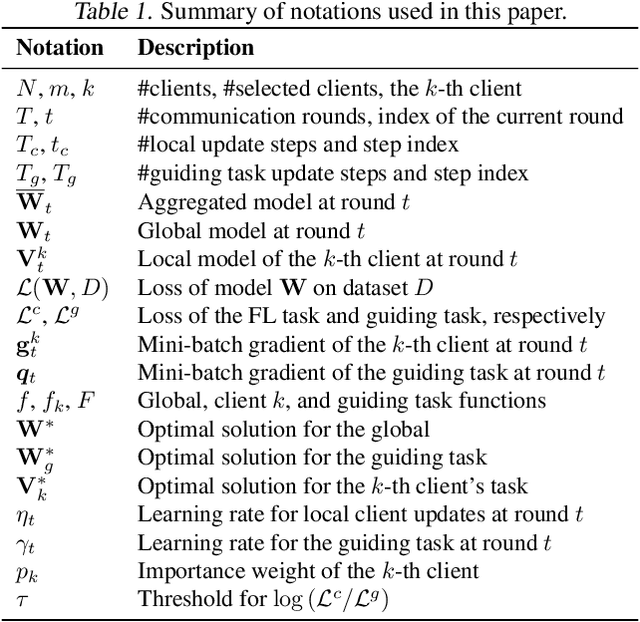
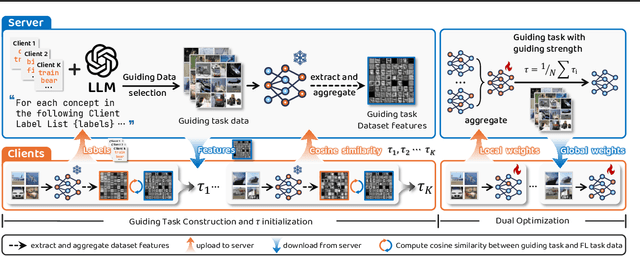
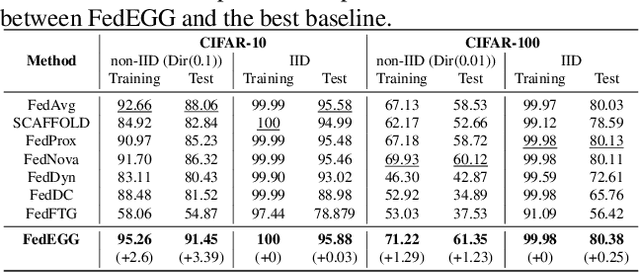
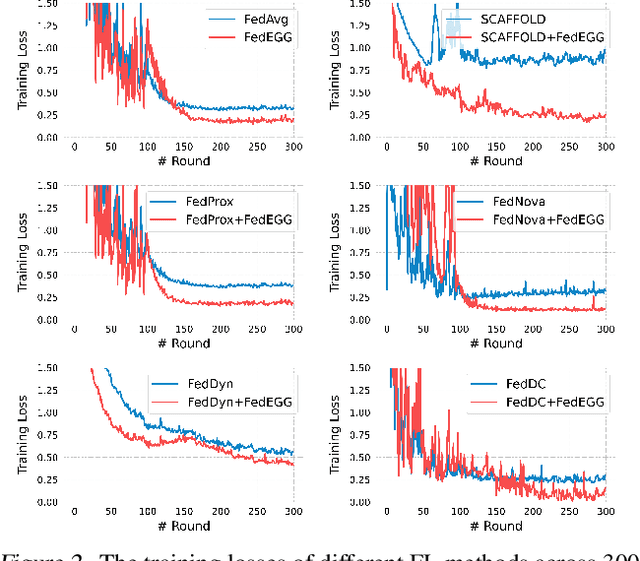
Abstract:Federated learning (FL) is a collaborative learning paradigm that allows different clients to train one powerful global model without sharing their private data. Although FL has demonstrated promising results in various applications, it is known to suffer from convergence issues caused by the data distribution shift across different clients, especially on non-independent and identically distributed (non-IID) data. In this paper, we study the convergence of FL on non-IID data and propose a novel \emph{Dog Walking Theory} to formulate and identify the missing element in existing research. The Dog Walking Theory describes the process of a dog walker leash walking multiple dogs from one side of the park to the other. The goal of the dog walker is to arrive at the right destination while giving the dogs enough exercise (i.e., space exploration). In FL, the server is analogous to the dog walker while the clients are analogous to the dogs. This analogy allows us to identify one crucial yet missing element in existing FL algorithms: the leash that guides the exploration of the clients. To address this gap, we propose a novel FL algorithm \emph{FedWalk} that leverages an external easy-to-converge task at the server side as a \emph{leash task} to guide the local training of the clients. We theoretically analyze the convergence of FedWalk with respect to data heterogeneity (between server and clients) and task discrepancy (between the leash and the original tasks). Experiments on multiple benchmark datasets demonstrate the superiority of FedWalk over state-of-the-art FL methods under both IID and non-IID settings.
 Add to Chrome
Add to Chrome Add to Firefox
Add to Firefox Add to Edge
Add to Edge